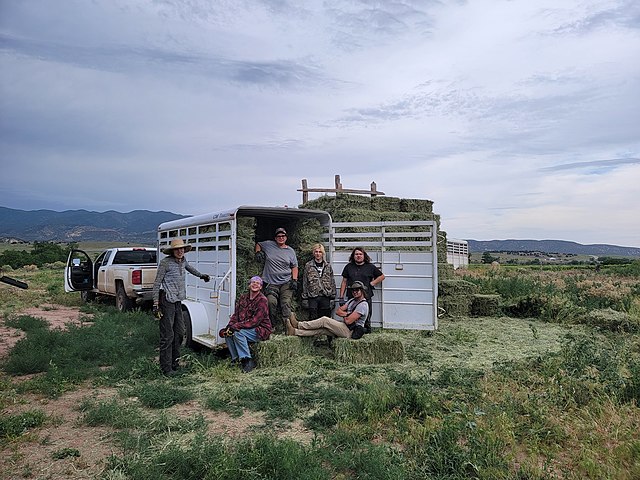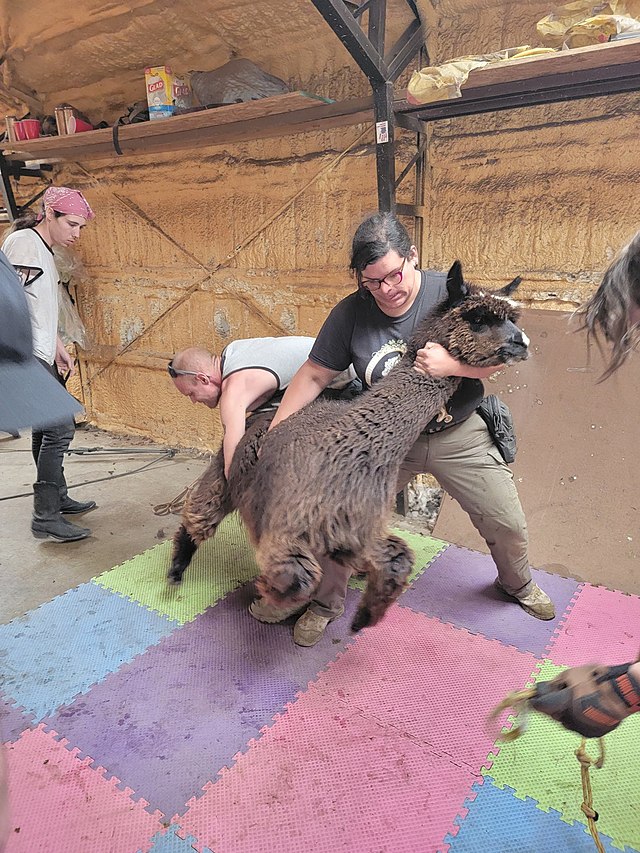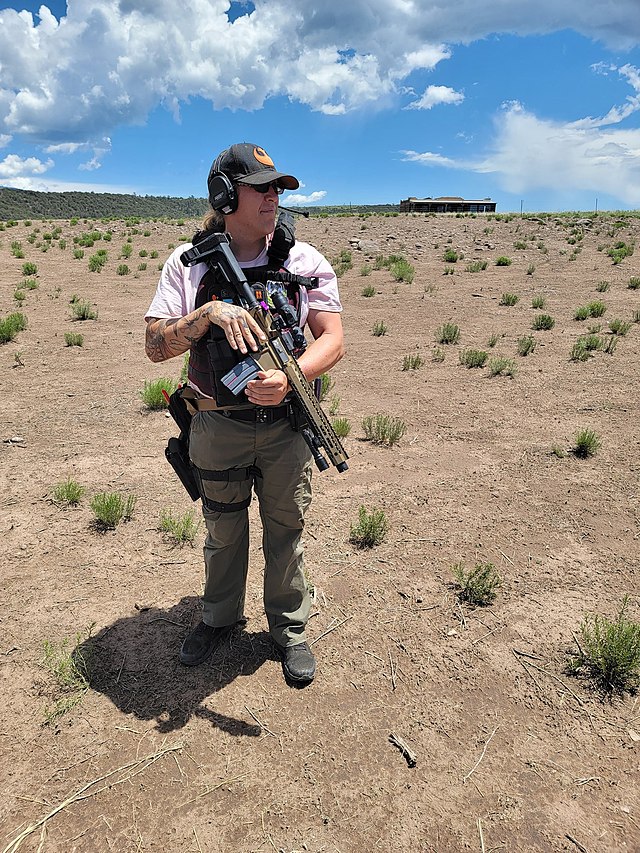
Residents of the Tenacious Unicorn Ranch (Photo by: Wikimedia Commons)
Sociologist Ray Oldenberg’s concept of third places legitimized the study of the human need for a gathering place outside of home or work, and on the surface;, it really is as simple as locating a physical space that is solely for existing alongside other humans. Building these spaces successfully, however, is a tricky balancing act that sometimes springs out of nowhere and necessity, but it sometimes fails despite the contrived best efforts of urban planners. I stumbled upon an unlikely case study of the former: McDonald’s. Among lower- and middle-class Americans across the nation, McDonald’s has become the de facto community center. For older, retired Americans, it offers cleanliness, hot coffee, and plenty of comfortable seating to hold their geriatric courts. For low-income or homeless Americans, it has cheap food and free Wi-Fi (and no policy against sticking around for long hours). McDonald’s are free of hierarchies, geographically accessible, and provide the safety and freedom for people to make connections among their communities. In short, McDonald’s is the epitome of a successful third place that has been created through human connection but also facilitates this connection.
1. Social offerings: Opportunities for social interaction
The hearth is at the center of the home and provides warmth and light for inhabitants; it symbolizes love and life.
Most of The Tenacious Unicorn Ranch’s permanent residents live together in an off-the grid, solar-powered geodesic dome known as an “Earthship” dwelling, located in Custer County, Colorado. A few others live in trailers on the Ranch’s property. According to Penny Logue, one of the founders of the Ranch, “Domes are funky and cool and a bit against the status quo—and they help the planet . . . They are weird but useful, which is the essence of queer.” Logue and her business partner, Bonnie Nelson, bought the dome first and then “fell in love” with the Wet Mountain Valley in which it was situated. “We belong here,” said Logue.
During the Ranch’s 3-day annual Shear-a-palooza event, during which they have an open invitation for anyone who wants to visit the ranch and help with the shearing of their 170+ alpacas, residents of the Ranch erected a “50-foot wide red and yellow tent” near the shearing barn for volunteers and residents to gather and rest. Their 2021 palooza from June 23-25 was the largest gathering the Ranch had ever had, with over 50 volunteers. Ranch resident Kathryn Gibes speaks to how important these gatherings are: “Reminding yourself how many of us there are, it’s really good. And then when they’re all under one big tent and they’re all there for the same reason—even if they’re not helping with the shearing, that’s fine, they’re just here for the experience—I live for that.” Part of the Tenacious Unicorn Ranch’s mission is to act as a “hub and meeting point” for queer people and communities across the US; according to their website, “there is no substitute for community, and we are all connected and need others around us to be healthy and happy.” This sense of community and connection was present during Shear-a-Palooza: “Walking up from shearing to a round circle of hyped up queer people is fucking awesome. Everybody’s cackling and laughing. Everybody’s having a great time. That’s our ranch,” said Logue. “We created joy. It’s a wonderful feeling,” added Nelson.

2. Openness: How welcoming a community is to outsiders
Thresholds are where people are invited in; they symbolize entrances—to new worlds, new beginnings, or new opportunities.
“We’re a haven. We offer work, we offer shelter, we offer peace.” Logue’s description of the Ranch’s ethos paints a welcoming picture. There’s an argument to be made that there is no singular space in the Ranch that is the welcome point; the entire project was conceived to be a “refuge” for queer and trans people. If one had to identify a threshold space at the Ranch, however, it would be those spaces they elect to open up to visitors: the camping space they offered volunteers during Shear-a-Palooza, or their field that they use as a gun range that is open for people to practice on. During Shear-a-Palooza, visitors brought their campers, pitched tents, or slept in their cars in the outdoor space directly outside of the geodesic dome. “It’s everything I hoped it would be. All the performative expectations are just gone the second you get there, because everybody’s at different stages of their own transition. So they get it, and you can just be,” said Palooza attendee Salina Grey, who transitioned in October 2020 and had been staying with friends across the country when she heard about the Ranch through social media. According to Ranch resident Daisy Hand, “There’s definitely a sense of community here that I never really got out in the world.”
3. Requiring commitment: How involved members of a community are in maintaining the upkeep of both physical spaces and relationships of the community
The kitchen of a house is where the labor of nourishment is centered; it is a place of warmth and comfort, but also hard work.
“I started the watering [the plants] because it was needed, but then I realized I was doing it because it got me out of bed. As long as the alpacas are happy and fed, we can keep growing and help more people,” Justine, a ranch hand, moved to the Ranch in July 2020. The livestock on the Ranch provide residents with enough daily work that they do not need to enter the job market. This work facilitates a large part of the bonding that takes place between Ranch residents. The Ranch depends on residents’ labor for financial support, and residents and volunteers report positive impacts from caring for and working around animals: “I loved it, because it’s therapy, being around the animals. I was very impressed by all the workers and everybody on the ranch. It’s hard work,” said volunteer Juliette Angotti, who is cisgender but wanted to lend her support to the Ranch. People in the surrounding town of Westcliffe also started employing residents from the Ranch in “local handiwork and physical labor,” and they provide recycling services to the county. “It’s really hard for people to paint you as ‘weird’ or whatever, if you’re just helping people.” Wise words from Logue.

Penny Logue poses with a rifle (Photo by: Wikimedia Commons)
4. Anarchic government: The absence of government; absolute freedom of the individual to exercise their autonomy
A home and its inhabitants would not be able to function in harmony without private spaces within which individuals are free to be alone; this freedom of the individual is embodied by the separate bedrooms in a house.
“There are militias in the Wet Mountain Valley. They’ve shown up armed and threatening. Moving here demanded gun ownership,” said Logue about the militant right-wing element the Ranch has encountered. Inside their geodesic dome is a wall displaying the prized firearms of the Ranch: Nelson’s sniper, a Springfield AR-15, two 12-gauge shotguns, and a 22-rifle. Custer County, where the Ranch is located, had a population of around 5,045 in 2021; 93.9% of which is white and 67.9% of which voted for Trump in the 2020 election. After an article was published in High Country News about the Ranch in March 2021, in which Logue called out a “fascist” 4th of July protest by Custer Citizens for Liberty, the Ranch started receiving threatening messages online. The Ranch created a 24-hour guard team in response to the threats and on March 6th at 3:00 AM one of the guards found two people armed with rifles trespassing on the property. The guard told them to “remove themselves or die” and they left. Describing the toll the threats on them, Nelson says: “I came to Penny vehemently anti-gun, but after that Fourth of July protest and everything that happened, I bought the biggest rifle I could get my hands on.” Stanley makes the point that “right wing ideologues are the real face of America. It’s the historical legacy of settler colonialism, and if you just leave, you’re going to find the same people in another place. At some point, you just have to make a stand.” The Ranch has now re-purposed one of its fields for target practice, during which they use 5.56 rounds for long-range drills. There is a fierce sense of individualism attached to the Ranch’s collective gun ownership: “The system isn’t going to help us. We have to protect us,” said Nelson.
 NOLAbeings
Multimedia artist Claire Bangser created NOLAbeings as a portrait-based story project that marries...
NOLAbeings
Multimedia artist Claire Bangser created NOLAbeings as a portrait-based story project that marries...
 Data corner: Adobe Suite (create a PDF, social media graphic, presentation, edit a photo and video
Data corner is where you go to work with analytics and top tech skills. It takes on everything from PERL and SQL to Canva and Sprout Social.
Data corner: Adobe Suite (create a PDF, social media graphic, presentation, edit a photo and video
Data corner is where you go to work with analytics and top tech skills. It takes on everything from PERL and SQL to Canva and Sprout Social.

I’ll walk you through why HCTRA is a game-changer for Houston commuters hctra.com.co